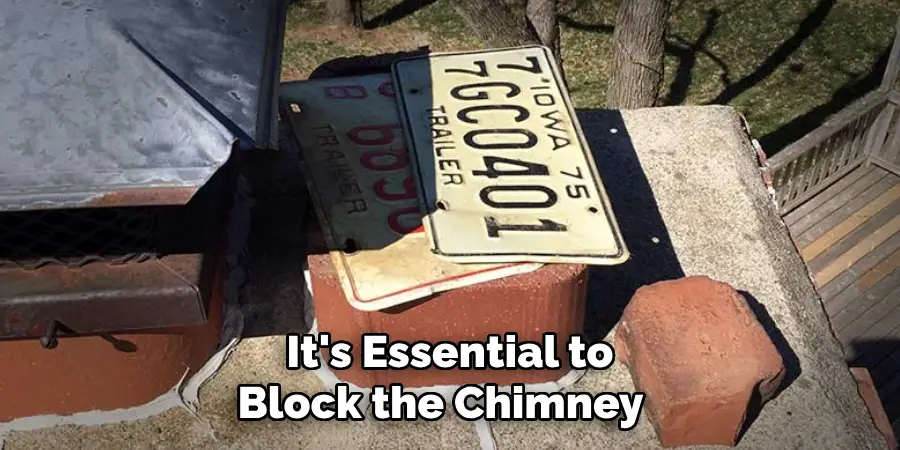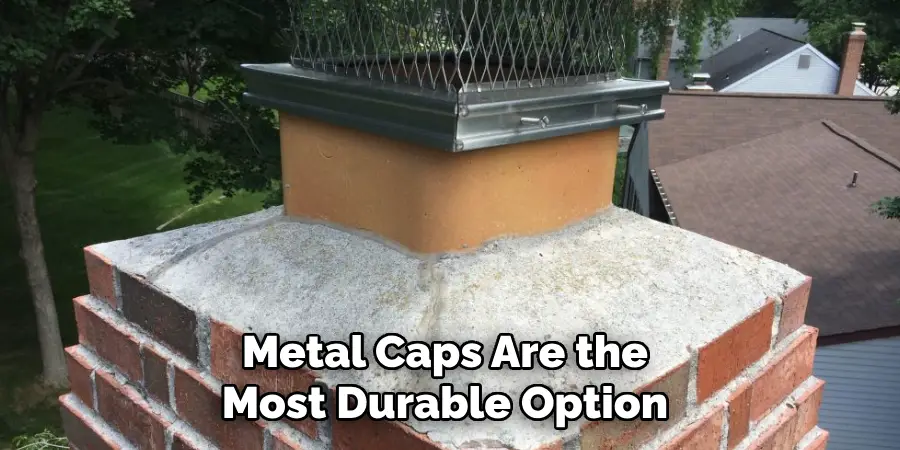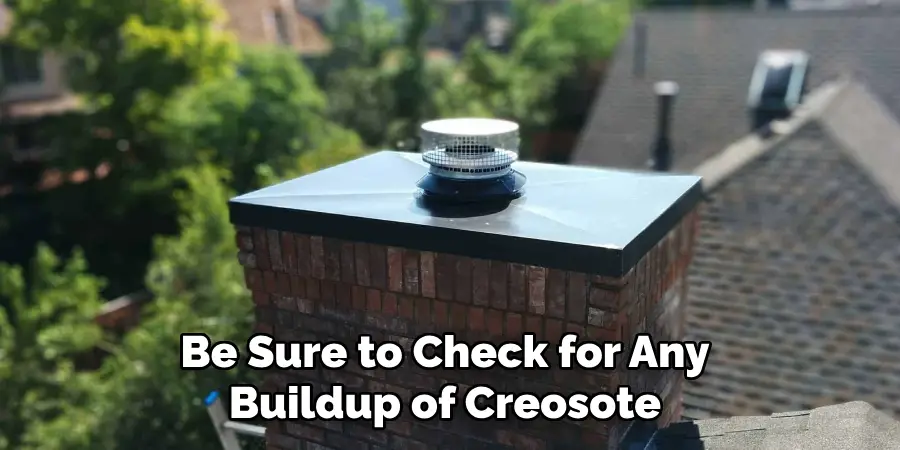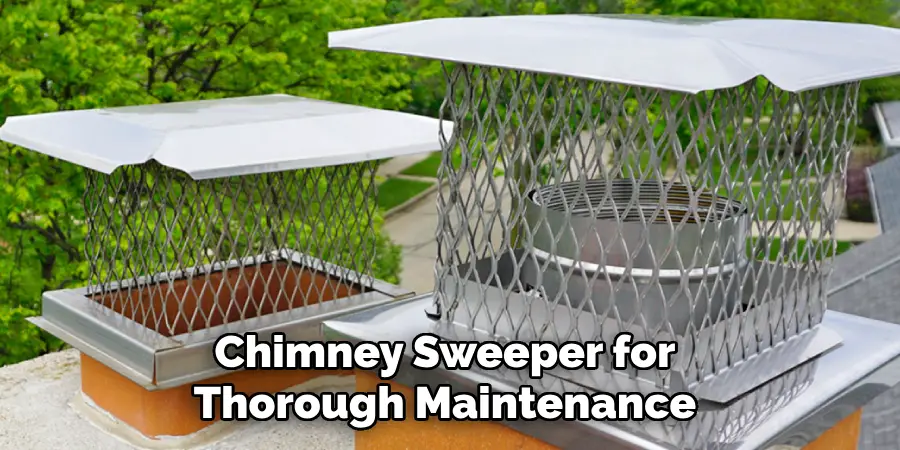Blocking a chimney from the inside is an essential task for homeowners who want to prevent energy loss, unwanted drafts, or animal infestations when the fireplace is not in use. Whether it’s for seasonal closure or permanent disuse, understanding the right methods and materials for blocking a chimney can help maintain indoor comfort and efficiency.

This guide on how to block a chimney from inside will walk you through the necessary steps and considerations to effectively seal your chimney, ensuring it contributes positively to your home’s thermal regulation and security.
What is Chimney Blocking?
Chimney blocking refers to the process of sealing off the chimney flue temporarily or permanently to prevent cold air infiltration, energy loss, or nesting by animals when the fireplace is not in use. This process involves using specific materials, such as chimney balloons, foam insulation, or metal caps, to effectively obstruct airflow through the chimney.
Blocking a chimney is especially important during the months when the fireplace sits idle, as it contributes to improved energy efficiency and comfort within the household. It also serves as a preventive measure against moisture intrusion and the accumulation of debris within the chimney structure. By understanding chimney blocking, homeowners can ensure a healthier, more secure living environment.
Why Block a Chimney From Inside?
There are several reasons why homeowners may need to block their chimneys from the inside. The most common ones include:
Energy Efficiency:
An open chimney flue can act as a pathway for cold air to enter the home, causing unwanted drafts and increasing heating expenses. Blocking the chimney prevents this airflow, making your home more energy-efficient.
Animal Intrusion:
Chimneys are a common nesting place for birds, squirrels, and other small animals. By blocking the chimney, you can prevent these animals from entering your home and causing damage or posing a safety hazard.
Seasonal Closure:
During warmer months when the fireplace is not in use, it’s essential to block the chimney to prevent unwanted heat gain indoors. This helps maintain comfortable indoor temperatures and reduces the strain on cooling systems.

7 Simple Step-by-step Guidelines on How to Block a Chimney From Inside
Step 1: Ensure Safety Precautions
Before beginning the process of blocking your chimney, it is crucial to take necessary safety precautions to protect yourself and your home. Start by ensuring you have the appropriate safety gear, including gloves, a dust mask, and safety goggles, to protect against dust, debris, or small animal droppings.
Additionally, make sure the fireplace and surrounding area are completely cool before you start; it’s advisable to wait at least 24 hours after the last fire to guarantee it is safe to proceed. It’s also wise to inspect the chimney for any obstructions or hazardous conditions, such as loose bricks or creosote buildup, which may need professional attention before continuing with the blocking process.
Step 2: Measure the Chimney Opening
Once safety measures are in place, the next step is to accurately measure the chimney opening. Begin by using a tape measure to determine the width and height of the flue. These dimensions are essential because they will guide your choice of materials for blocking the chimney effectively. Take the measurements at various points to account for any irregularities in the chimney’s shape.
Record these measurements carefully, as precise sizing is crucial to ensure a snug and secure fit of the blocking material, whether you opt for a chimney balloon, foam insert, or metal cap. Accurate measurements will help prevent any unwanted airflow and enhance the blocking efficiency of your chosen method.
Step 3: Choose Your Blocking Material
There is a variety of materials available for blocking chimney flues. Some popular options include inflatable chimney balloons, foam inserts, or metal caps. Each has its unique advantages and disadvantages, so it’s essential to research and choose the material that best suits your needs and budget.
Inflatable Chimney Balloon:
This option is suitable for temporary closure or when the fireplace may be used occasionally. The balloon is inserted into the chimney flue and inflated until it fits snugly against the walls of the chimney. It effectively blocks airflow and helps maintain indoor temperatures.
Foam Inserts:
These are specifically designed to fit into standard-sized flues and provide a more permanent solution for blocking chimneys. Foam inserts can be easily installed without professional help, and they are relatively inexpensive compared to other materials.
Metal Caps:
Metal caps are the most durable option for blocking chimneys as they are made of strong materials like stainless steel or copper. They can withstand harsh weather conditions and prevent any animal intrusion. However, metal caps are more expensive than other options and may require professional installation.

Step 4: Prepare the Blocking Material
Once you have chosen your preferred blocking material, it’s time to prepare it for installation. For inflatable chimney balloons, make sure it is inflated to the recommended size before inserting it into the flue. Foam inserts may need some trimming and shaping to fit accurately into the chimney opening.
If you opt for a metal cap, ensure that all necessary components are included in the package and read through any instructions or precautions carefully before proceeding.
Step 5: Insert the Blocking Material
With your blocking material prepared and ready, carefully insert it into the chimney opening. For inflatable chimney balloons, gently place the deflated balloon into the flue and gradually inflate it using a hand pump or the provided inflator until it forms a tight seal within the chimney. If using foam inserts, press the material firmly into the flue, ensuring it fits snugly against the walls and creates a barrier against airflow.
When working with metal caps, place the cap over the chimney opening from the outside, securing it according to the manufacturer’s instructions, often involving tightening clamps or screws to lock it in place. Ensure the blocking material is secure and stable, checking for gaps or unsecured areas that could allow air or animals to penetrate. This step is crucial for maintaining an effective seal and achieving the desired energy efficiency and protection benefits.
Step 6: Consider Additional Safety Measures
For added safety and prevention of any potential hazards, consider installing a chimney cap on top of the flue. This will not only provide additional protection against animal intrusion but also prevent rain or debris from entering the chimney and causing damage.
If you have opted for an inflatable balloon or foam insert, it’s crucial to remove them before using your fireplace. Make sure to follow the manufacturer’s instructions carefully to avoid any damages or accidents while deflating or removing the blocking material.
Step 7: Monitor and Clean Your Chimney Regularly
Blocking your chimney is an effective way to enhance energy efficiency, prevent animal intrusion, and promote safety in your home. However, it’s essential to monitor and clean your chimney regularly, even with a blocked flue, to ensure proper functioning and prevent any potential hazards or damages.
Be sure to check for any buildup of creosote or debris in the chimney during routine cleaning and maintenance, which may require professional attention. Regular monitoring and cleaning will help maintain the efficiency and safety of your blocked chimney for years to come.

Following these steps on how to block a chimney from inside will help you effectively block your chimney and reap the benefits of energy efficiency, safety, and protection in your home. Remember to prioritize safety measures and carefully read through instructions before proceeding with any blocking method. Stay warm and safe this winter season with a properly blocked chimney. Happy blocking!
Frequently Asked Questions
Q: Can I Use Any Material to Block My Chimney?
A: No, it is essential to choose a suitable blocking material that fits the dimensions of your flue and provides adequate airflow resistance. Options include inflatable chimney balloons, foam inserts, or metal caps.
Q: Do I Need Professional Help to Block My Chimney?
A: It depends on the type of blocking material you choose and your level of comfort with DIY projects. Inflatable chimney balloons and foam inserts can be easily installed without professional help, but metal caps may require professional installation.
Q: How Often Should I Clean My Blocked Chimney?
A: It is crucial to monitor and clean your chimney regularly, even with a blocked flue, to ensure proper functioning and prevent any potential hazards or damages. We recommend scheduling a yearly cleaning by a professional chimney sweeper for thorough maintenance.

Conclusion
Blocking your chimney from inside is a simple but effective solution for maintaining energy efficiency, preventing animal intrusion, and ensuring safety in your home. By following these steps on how to block a chimney from inside and taking necessary precautionary measures, you can easily block your chimney without the need for professional assistance.
Remember to monitor and clean your chimney regularly to maintain its efficiency and safety. With proper maintenance, your blocked chimney will continue to provide these benefits for years to come. So, take the time to carefully choose your blocking material and follow the steps outlined above for a secure and efficient solution to block your chimney opening. Stay warm and safe! Happy blocking!

